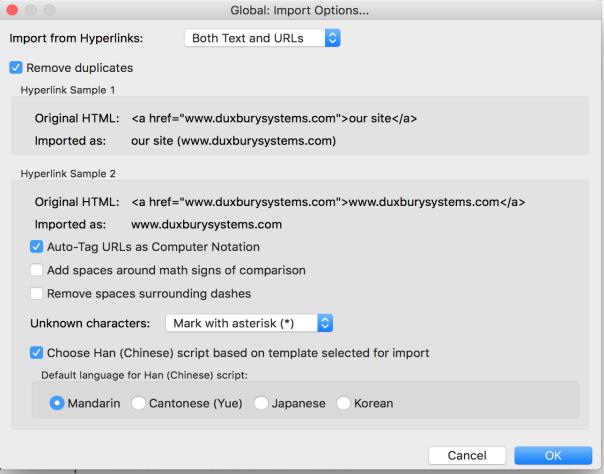
Whichever input method you use to create your mathematical documents in order to produce UEB braille with math, in America it is best to use the DBT template called "English (UEB) - BANA". In the United Kingdom, use the DBT template called "English (UEB) - UK Formatting".
The style math is meant to be applied to technical notation, such as a math expression.
The style math-TextInMath is intended for use within the math style for enclosed non-technical notation.
When importing from Word document with MathType objects, the MathType objects are automatically assigned the math style. Similarly, when importing from a LaTeX file, the items in math mode are assigned the math style.
To apply a style in DBT, highlight the text, press F8, and select the DBT style from the list.
There is an option in UEB to add spaces around signs of comparison, like the equals sign and less than sign, around both signs of comparison and signs of operation like the plus sign, or around neither of these. Adding spaces around only signs of comparison seems to be the most common preference for UEB transcribers, except that those producing material for students in the first few grades may want to add spaces around signs of operation as well. For DBT users adding spaces around signs of comparison only, there is an option to have these spaces added around signs of comparison as you import a Word or LaTeX file.

We will also look into adding an option like this for adding spaces around signs of operation.
Previously we recommended use of the DBT code [amspN] for setting up adding spaces around signs of comparison, or both signs of comparison and signs of operation. That code still works, but we no longer recommend it, because it can have unwanted side effects. That led us to creating the import option for adding spaces around signs of comparison instead.
Click here for an excerpt from Unified English Braille Guidelines for Technical Material which explain the role of grade one indicators in UEB math.
UEB allows some leeway for when and where to use grade one character, word, and passage indicators in math, with more than one correct usage. If you do not like some of the choices that DBT makes in this regard, you can influence DBT's decisions with a [utpN] code.
[utp] stands for "use transcriber preference." The N is the number 0, 1, or 2.